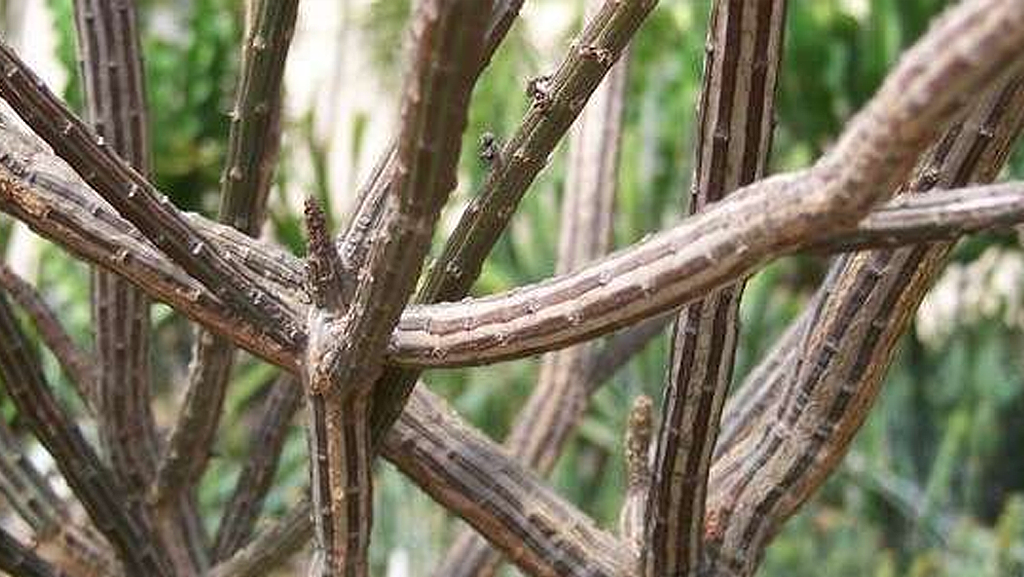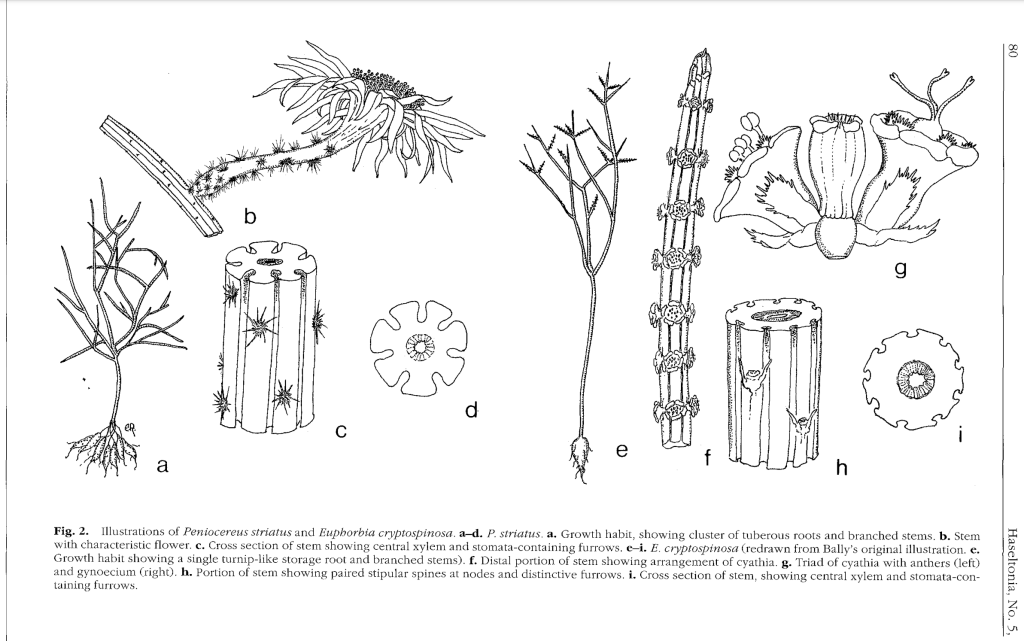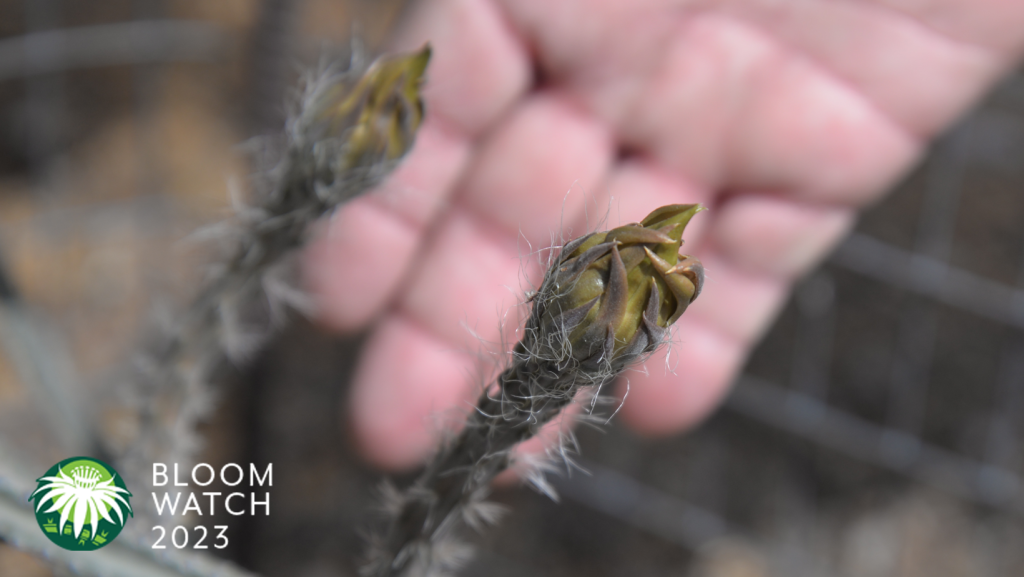
Bloom Watch #7
July 12, 2023Another rogue player …
“It looks like we have another rogue cactus on our hands!” said Chris on Monday morning.
Queen of the Night #379 is at the head of the pack with two buds measuring 110mm and on track to bloom this week. The rest of the regal monarchs are still between 40mm-60mm.
“With the increase in humidity this week, (40% this morning!) they may pick up the pace. I’ll definitely keep you all posted.” he says.
“The Queen’s Court at the Overlook has several cacti ready to bloom. One was blooming Friday night! Check them out if you’re brave enough to go outside!”
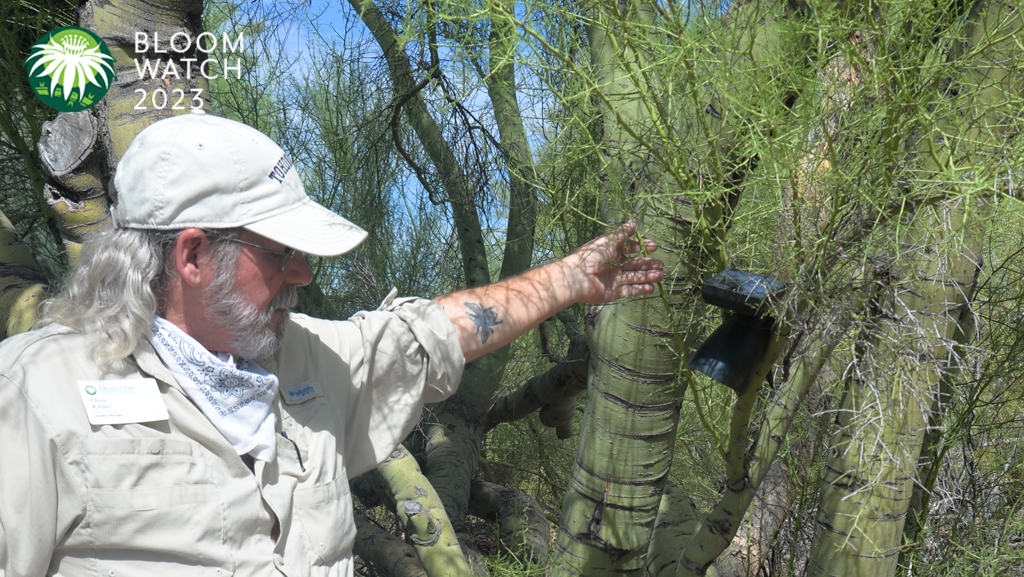
A Botany Lesson
Speaking of the Queen’s Court (the row of potted cacti positioned at The Overlook here at Tohono Chul), one of the courtiers, Peniocereus striatus, illustrates a fascinating example of convergent evolution in the plant kingdom. Convergent evolution is the process of distantly related organisms evolving similar traits in order to adapt to similar situations. Introducing, Euphorbia cryptospinosa, native to the landscapes of Ethiopia, Somalia, and Kenya.
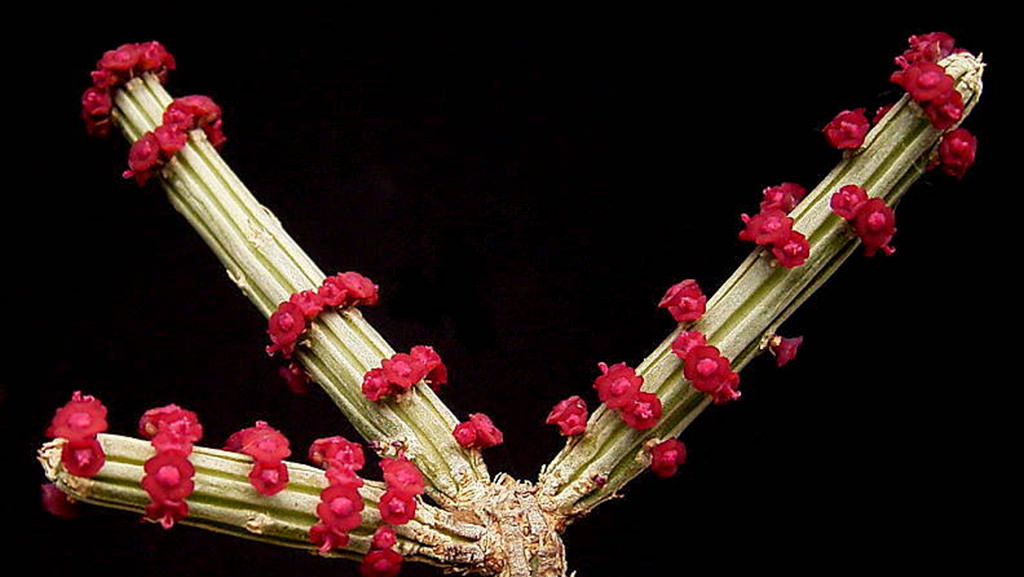
This completely unrelated plant from the opposite side of the planet has been shaped by it’s own climate to look much like our Peniocereus striatus. Both have tuberous roots, with slender cylindrical stems that are camoflagued amongst the shrubs where they both grow in sandy, gravely soil. In addition to being succulent, both have developed an ingenious way of preventing extra water loss during drought.
Stomata are unique to plants and are the specialized groups of cells that open and close to allow for gas exchange of CO2, oxygen, and water vapor, through the epidermis of a plant. In our courtier and our friend the Euphorbia cryptospinosa, the stomata are restricted to narrow furrows that run vertically along the stems. When they have acquired sufficient moisture, these stems are plump and the stomata are more exposed to the air to enable gas exchange, but still shielded from the wind.
When the plant stems lose water, the furrows are sucked in from this water loss and they begin to close up like an accordion. By enclosing their stomata this way, they preserve their thin stems from shriveling up, even in very dry habitats. By studying comparative anatomy in this way, we can learn a lot about how plants work. Thanks to the University of Arizona Herbarium for providing this research for free so we can all level up our botany!
By Tracey Till, Propagation Associate
Don’t miss the big night! Sign up for Bloom Watch emails here.
Be sure you select “Bloom Watch” on the dropdown menu!


